Description
- [Wide Application] Per 150W solar panel generates about 600Wh a day under 4 hours’ full sunlight, perfect for single battery charging, for motorhome, shed, garden and water fountain, etc.
- [High Quality] The panel is covered with a special glass to protect against the bad environment such as hail, snow and ice. And the panel frame is made of aluminum to make the panel more stable and durable.
- [Easy Installation] With pre-drilled holes, the panel can be installed on the roof or on the earth by adjustable solar panel tilt mount brackets. Each solar panel comes with 90cm 12awg cable with Male/Female quick connectors.Plug and Play.
- [High Conversion Efficiency] Over 90% transferable power output is remained after 10 years’ use, and over 80% transferable power output is remained after 25 years’ use.
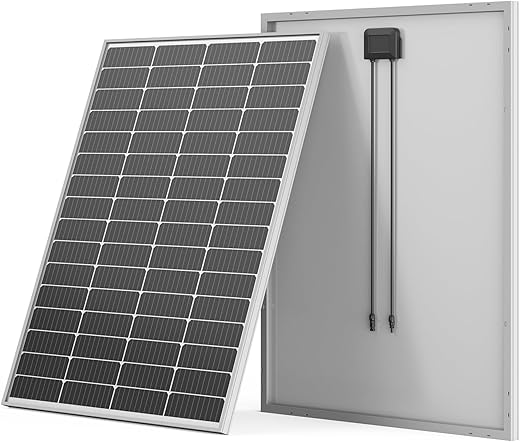
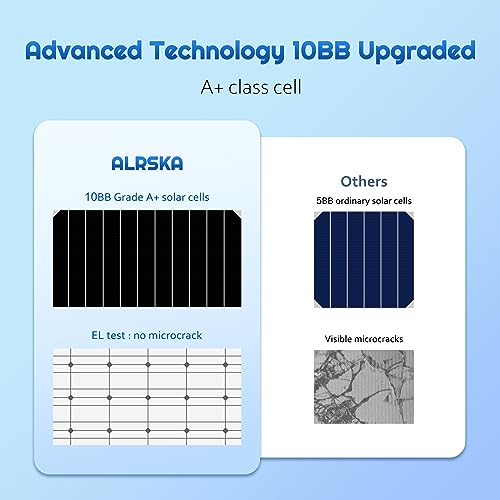
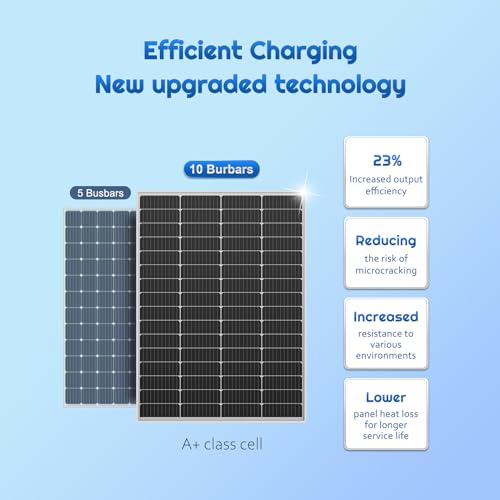
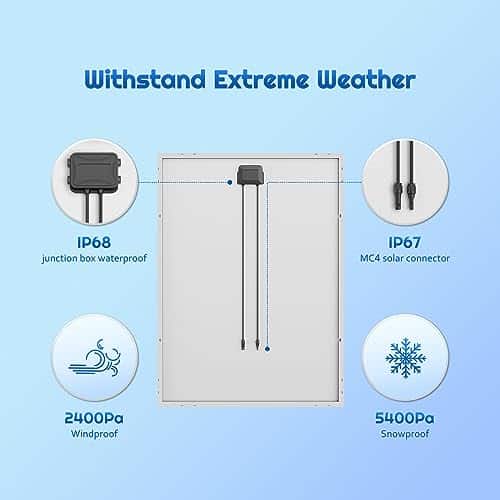
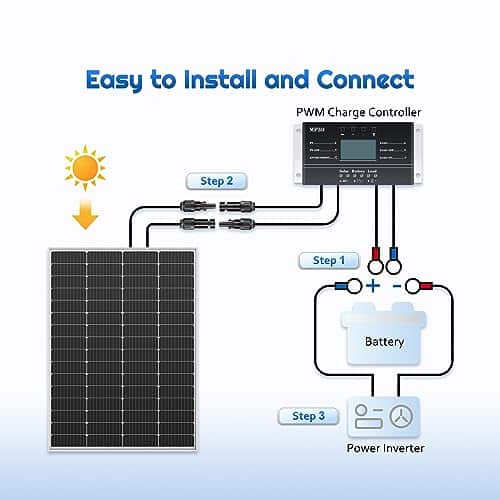
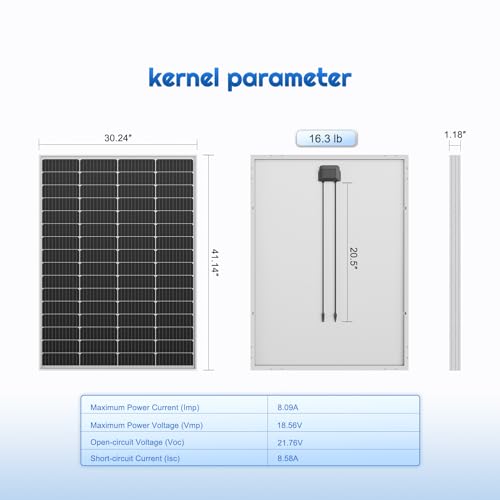

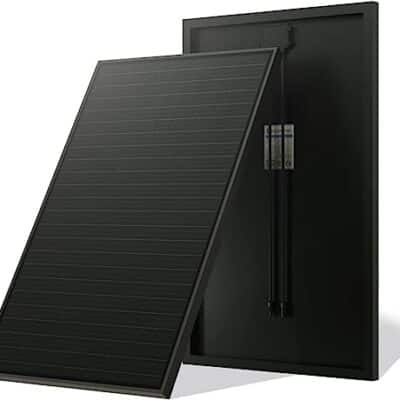

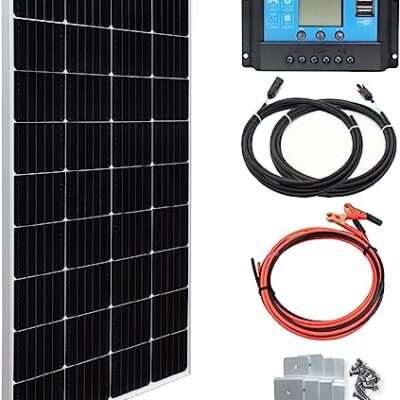
KC –
Update: Vendor reached out and offered to rectify the situation by fully standing behind their product. This was a welcome surprise. Raising rating from 1 to 4 stars.
—
Bought the 200W panel in May and it worked out of the box maxing out my 10A MPPT controller for a 100AH LiFePo battery at about 160W on full sun in Texas. Less than 2 months later and now it will not produce over 50W in perfect sunny conditions. Replaced with my old 100W panel which still gets over 80W in good sun. Waste of money, will need to buy another 200W from another manufacturer since my return window closed in June.
The junction box on the back of the panel is easily open and well sealed with a rubber ring (not greased). Inside perfectly dry and clean. However, noticed there are two Schottky diodes in series (installed with the correct polarity) even though there is only one single string of cells. The middle bus bar in between the two diodes is not connected, nor is there anywhere to reach halfway the string of cells. Odd to have two diodes when there is only one string of cells but the panel worked well in both parallel and in series while it lasted.
Amazon customer –
I bought 18 Alrska solar panels in the last 20 months. I have built 2 portable racks of 6 solar panels each in the past 16 months. Over the winter time, I got about 1Kwatt-hours per rack. Now I am getting about 1.3KWatt-hour per rack in April, California. I am sure the wattage will increase greatly during Summer time. I picked this panel due to the light weight and smaller size for me to handle by myself. It works out great. All panels are working very reliably. The second rack was completed last December. The total power output was a little lower than the first rack. I first thought it was due to the sun angle for the time. However, I did a thorough check early this year and found one of the panel was actually not putting out any current. I remembered Alrska customer service told me before that my last batch of 6 panels may have problem due to Amazon was trying to ship everything in their inventory during the year end period. I reported this problem to Alrska in March. No question asked, they sent me replacement as soon as it was available. I am very happy for their excellent service and a great reliable product for what I need in my Power back up system. I definitely will purchase more panel from this company in the future.
John E –
First, mine didn’t come with the “anti-transport collision angle” (the plastic corners) like shown. That is not a big deal for me. It was well packaged on the side and corners, with hard foam wrapped up two sides about 6 inches, although that still leaves the glass unprotected except by cardboard and dead space. It arrived intact and in good shape, nothing bent, nothing broken (surprisingly, Amazon delivered via the post office who kindly left it on the front porch). I’m comparing it to two of the Rich Solar 100 watt polycrystalline panels, since they are in the same price range, and I have some to compare it with. Basically side by side (flat on concrete, not ideal) each of the Rich Solar panels put out about 75 watts, and the Alrska puts out about 140 watts, so very close in performance. The Arlska uses significantly less space to put out *almost* the same power, so their claim of “up to 23%” performance seems true. It is certainly an attractive panel and priced right. I’ve included a picture of the panel spec sheet, since they don’t include specs in the listing (apparently they know little about solar panels, why else leave out the specs?)
Model AK-200-36M
Pmax 200w (maximum power)
Imp 10.7 amps (maximum power current)
Vmp 18.7v (maximum power voltage)
Voc 22.1v (open-circuit voltage)
Isc 11.34 amps (short-circuit current)
Dimensions 1100mm x 890mm x 30mm (the imperial measurements they give are close enough)
43.3 x 35 x 1.18 inches (oddly enough the data is available on their website, but not on Amazon, I looked)
Pretty good and cost effective panels, and seemingly lives up to the claim of increased efficiency (compared to others in their price class). The box on the back seems water tight enough, and the cables and connectors seem as good as any I’ve seen. These seems to be a pretty good deal to maximize solar in existing space. I included the specs on voltage and amperage, because you actually need those numbers to plan how to wire them so as not to blow out your solar charge controller. These are slightly lower voltage than most, but pretty decent especially when put in series. The 22.1v open circuit voltage means you can put 3 in series for the common (cheap) 80v MPPT controllers, or 4 in series for say a Victron 100v input. The 10 amp output current also works well for the branch connectors (to combine 2 strings) and common 12 or 10 gauge photovoltaic wiring (use 10 gauge pure copper, the extra price is worth it compared to the cheaper 12 gauge copper clad aluminum).
I ordered more (so that should answer your question of “should I buy these?”)
John E –
I bought 4 of these panels, 1 seemed ok until it was in full sunlight. Once it received over 500 watts/meter sunlight, the panel would start heating up and the output voltage would drop to almost 0. These panels look amazing and the other 3 work very well at over 100% vs solar irradiance using a solar meter.
I tested the bad panel using multi-meter with both short current and voltage and they do not show bad signs until you put them in series with 3 other panels. The voltage of a bad panel will drop to near 0 and it will stop producing power in bright sunlight. I’m waiting for these to come back in stock to replace the 4th panel. The other 3 are working great. I recommend keeping the box and packing of these well packaged panels until you can determine each panel individually is performing in full sunlight as they should. So far, my experience is a 25% failure rate. 1 out of 4 will be bad and that is based on a small sample. I bought 5 of the 180 watts and only 1 of them were bad. Be prepared, test shortly after you receive them. There is a reason these are inexpensive, now you know one reason why. I hope they last.
Update: 3/1/2024 they don’t last. I was able to return one but now I have another panel that stopped working. I replace the 200 watt panels with 180 watt and they are working well. 10 180 watt panels still doing well and I have the 3 200 watt panels waiting for the dump since they were out of stock for 2 months. I have no confidence after 2 of 4 were bad died after working for days and then very low voltage. The 2nd panel worked for over 30 days and we know China warranties are worthless.